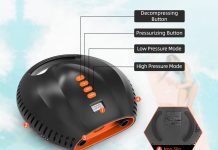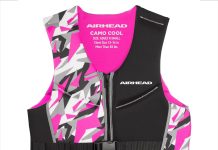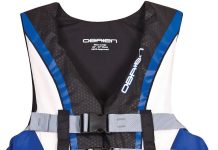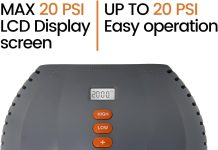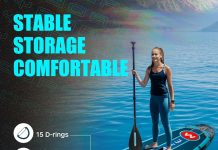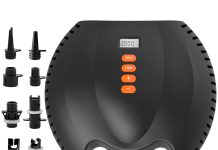In the world of paddleboarding, finding the perfect tie-down straps to securely fasten our precious SUP boards to roof racks can be quite the challenge. With countless options available, it’s easy to become overwhelmed. Fear not, as we’ve done the research for you and are here to shed some light on the matter. In this article, we will explore the top tie-down straps that deliver reliability, strength, and peace of mind, allowing us to hit the waves with confidence. So, whether you’re a seasoned paddleboarder or just starting out, we’ve got you covered.
Factors to Consider When Choosing Tie-Down Straps
When it comes to securing SUP (Stand Up Paddle) boards to roof racks, choosing the right tie-down straps is essential. The safety and stability of your boards during transportation depend on it. With so many options available in the market, it can be overwhelming to determine which tie-down straps will work best for your specific needs. Here, we have compiled a comprehensive guide to help you make an informed decision.
Length and Width
One of the key factors to consider when choosing tie-down straps is their length and width. The length of the straps should be long enough to easily wrap around your SUP boards and secure them to the roof rack. Additionally, it’s important to ensure that the width of the straps is sufficient to evenly distribute the pressure and hold the boards firmly in place. Straps that are too narrow may cause damage to the boards or result in inadequate tension, while excessively wide straps may be difficult to handle.
Material
The material of the tie-down straps plays a crucial role in their overall durability and performance. Nylon and polyester are the most commonly used materials for tie-down straps. Both materials offer excellent strength and resistance to abrasion. However, nylon straps have a higher elasticity, which allows them to absorb shock and provide greater flexibility during transportation. On the other hand, polyester straps are known for their low stretch capabilities, ensuring a secure and stable hold. Consider your specific needs and preferences when selecting the material for your SUP board tie-down straps.
Strength
The strength of the tie-down straps is another important factor to consider. It is crucial to choose straps that can handle the weight and load of your SUP boards. Look for straps that have a high working load limit (WLL) and a breaking strength that exceeds the weight of your boards. This will ensure that the straps can securely hold the boards in place without any risk of failure or damage. Additionally, opt for straps with reinforced stitching and strong hardware components such as hooks or buckles for added durability.
Buckle Type
The type of buckle used in tie-down straps has a significant impact on their ease of use and reliability. Two popular options for SUP board tie-down straps are cam style and ratchet style buckles. Cam style buckles are quick and easy to secure, making them a convenient choice. However, they may require more effort to tighten and adjust the tension. On the other hand, ratchet style buckles provide a high level of tension control and allow for precise adjustment. They are particularly useful when you need to secure your boards tightly. Consider your personal preference and the level of tension control required for your SUP board tie-down straps.
Ease of Use
Ease of use is an important consideration when selecting tie-down straps for your SUP boards. Look for straps that are straightforward to handle and can be easily attached and detached from the roof rack. Quick-release tie-down straps, for example, feature a simple mechanism that allows for rapid installation and removal. This can save you valuable time and effort, especially if you frequently transport your SUP boards. Additionally, consider straps that come with user-friendly features such as padded handles or color-coded instructions for hassle-free use.
1. Cam Style Tie-Down Straps
Cam style tie-down straps are a popular choice for securing SUP boards to roof racks. These straps feature a cam buckle mechanism that allows for quick and easy tightening. The cam buckle has teeth that lock the strap in place, preventing any slippage or loosening during transportation.
Advantages
One of the main advantages of cam style tie-down straps is their simplicity. They are straightforward to use, making them an excellent option for beginners or those who value convenience. Cam straps also tend to be more affordable compared to other types of tie-down straps, which can be appealing to budget-conscious buyers.
Disadvantages
One drawback of cam style tie-down straps is that they may require more physical effort to achieve the desired tension. Unlike ratchet style straps, which allow for precise adjustment with a simple lever mechanism, cam straps need to be manually tightened by pulling the loose end of the strap. This can be time-consuming and challenging, especially when securing multiple SUP boards.
2. Ratchet Style Tie-Down Straps
Ratchet style tie-down straps are known for their exceptional tension control and secure hold. These straps utilize a ratcheting mechanism that allows for precise adjustment and tightening.
Advantages
One of the major advantages of ratchet style tie-down straps is their ease of use when it comes to achieving a high tension level. The ratcheting mechanism allows for incremental and controlled tightening, ensuring a secure hold on your SUP boards. This feature makes them ideal for long-distance journeys or when traveling at high speeds.
Disadvantages
Despite their advantages, ratchet style tie-down straps may be pricier compared to other options. The additional features and hardware required to facilitate the ratcheting mechanism contribute to the higher cost. These straps may also have a steeper learning curve for beginners, as the ratchet mechanism requires familiarity and practice to operate effectively.
3. Locking Tie-Down Straps
Locking tie-down straps offer an extra level of security by incorporating a locking mechanism into the buckle. These straps typically feature a combination lock or a key lock that prevents the strap from being tampered with or accidentally released.
Advantages
The main advantage of locking tie-down straps is the added peace of mind they provide. They act as a deterrent against theft or unauthorized access to your SUP boards. Locking straps are particularly useful when leaving your boards unattended for an extended period, such as during overnight trips or when stopping at a restaurant.
Disadvantages
A potential disadvantage of locking tie-down straps is the additional complexity they introduce in terms of setup and use. Engaging and disengaging the lock may require more time, especially in situations that require quick adjustments or frequent removal. Locking straps also tend to be slightly bulkier due to the added lock mechanism, which may affect storage space and ease of handling.
4. Bungee Cord Tie-Down Straps
Bungee cord tie-down straps provide a unique combination of flexibility and secure hold. These straps feature an elastic bungee cord that allows for some movement and shock absorption while keeping the SUP boards firmly in place.
Advantages
One of the main advantages of bungee cord tie-down straps is their ability to absorb shocks and vibrations during transportation. This feature is particularly useful when traveling on rough or uneven roads, as it helps protect your SUP boards from damage caused by excessive jostling. Bungee cord straps also offer a certain level of flexibility, allowing for easier installation and adjustment.
Disadvantages
While bungee cord tie-down straps offer flexibility, they may not provide the same level of precise tension control as other types of straps. The elasticity of the bungee cord can sometimes lead to unpredictable movement or slippage, especially during high-speed travel or strong winds. Additionally, the bungee cord material may be more prone to wear and tear over time, requiring more frequent replacements compared to straps made from more durable materials.
5. Quick-Release Tie-Down Straps
Quick-release tie-down straps are designed for added convenience and speed. These straps feature a quick-release mechanism that allows for rapid attachment and detachment, saving you valuable time and effort.
Advantages
The main advantage of quick-release tie-down straps is their time-saving functionality. If you frequently transport your SUP boards or need to load and unload them quickly, these straps can significantly expedite the process. The quick-release mechanism allows for almost instant removal, eliminating the need to manually unwind or untangle the straps.
Disadvantages
One potential disadvantage of quick-release tie-down straps is their reduced tension control compared to other types of straps. While they provide convenience and ease of use, the quick-release mechanism may sacrifice some degree of tightness and security. This can be problematic if you are traveling long distances or in challenging weather conditions that require a more secure hold on your SUP boards.
6. Heavy-Duty Tie-Down Straps
Heavy-duty tie-down straps are designed to withstand high loads and provide exceptional strength and durability. These straps are ideal for securing larger SUP boards or when transporting multiple boards simultaneously.
Advantages
The key advantage of heavy-duty tie-down straps is their ability to handle heavier loads. They are constructed with reinforced materials and hardware components to withstand the strain and pressure exerted on the straps when securing large or multiple SUP boards. Heavy-duty straps provide a reliable and secure hold, ensuring that your boards remain stable and protected during transportation.
Disadvantages
One potential disadvantage of heavy-duty tie-down straps is their weight and bulkiness. The sturdy construction and additional reinforcement necessary to achieve a high load capacity contribute to the increased size and weight of these straps. This may affect the overall maneuverability and ease of handling, especially when installing or removing them from the roof rack. Additionally, heavy-duty straps may come at a higher price point, reflecting their enhanced strength and durability.
7. Soft Loop Tie-Down Straps
Soft loop tie-down straps offer an alternative method of securing SUP boards to roof racks. These straps feature a soft loop instead of the traditional hooks or buckles, providing a gentler and more versatile attachment point.
Advantages
One major advantage of soft loop tie-down straps is their ability to prevent damage to the SUP boards during transportation. The soft loop creates a cushion between the strap and the boards, reducing the risk of scratches, dents, or pressure marks. Soft loop straps are also highly flexible and can be adjusted to fit various attachment points, ensuring a secure and customized hold on your boards.
Disadvantages
A potential disadvantage of soft loop tie-down straps is the learning curve associated with their use. It may take some time to familiarize yourself with the proper technique for threading the strap through the loop and achieving the desired tension. Additionally, soft loop straps may have a lower load capacity compared to other types of straps, limiting their use for heavier or larger SUP boards.
8. UV-Resistant Tie-Down Straps
UV-resistant tie-down straps are specifically designed to withstand prolonged exposure to sunlight and the damaging effects of ultraviolet (UV) rays. These straps feature materials and coatings that provide enhanced durability and longevity in outdoor environments.
Advantages
The main advantage of UV-resistant tie-down straps is their ability to maintain their strength and integrity, even when exposed to harsh sunlight. UV rays can cause regular tie-down straps to deteriorate and weaken over time, increasing the risk of failure during transportation. UV-resistant straps are less prone to fading, cracking, or becoming brittle, ensuring reliable performance and safety for your SUP boards.
Disadvantages
One potential disadvantage of UV-resistant tie-down straps is their higher cost compared to regular straps. The specialized materials and coatings used to enhance UV resistance contribute to the increased price. However, investing in UV-resistant straps can be worthwhile in the long run, as they offer extended durability and protection against the damaging effects of sunlight.
9. Weatherproof Tie-Down Straps
Weatherproof tie-down straps are designed to withstand various weather conditions, including rain, snow, or high humidity. These straps are constructed with materials that offer resistance to moisture, corrosion, and mold growth.
Advantages
The primary advantage of weatherproof tie-down straps is their ability to maintain their performance and durability, even when exposed to adverse weather conditions. Regular straps may become waterlogged, develop mold or mildew, or corrode when used in wet conditions. Weatherproof straps, on the other hand, remain resistant to moisture, ensuring a secure hold on your SUP boards and extending the lifespan of the straps.
Disadvantages
One potential disadvantage of weatherproof tie-down straps is their higher cost compared to regular straps. The additional materials and treatments used to enhance weather resistance contribute to the increased price. However, the added protection against moisture-related damage makes weatherproof straps a worthwhile investment for those who frequently transport their SUP boards in wet or humid environments.
In conclusion, choosing the right tie-down straps for securing your SUP boards to roof racks requires careful consideration of various factors. The length and width of the straps should be suitable for your specific needs, while the material and strength should provide durability and reliability. The buckle type and ease of use should align with your preferences and level of tension control required. Additionally, factors such as quick-release mechanisms, heavy-duty construction, soft loop options, UV resistance, and weatherproof capabilities should be evaluated based on your individual requirements. By exploring the advantages and disadvantages of different types of tie-down straps, you can make an informed decision and ensure the safety and stability of your SUP boards during transportation.

